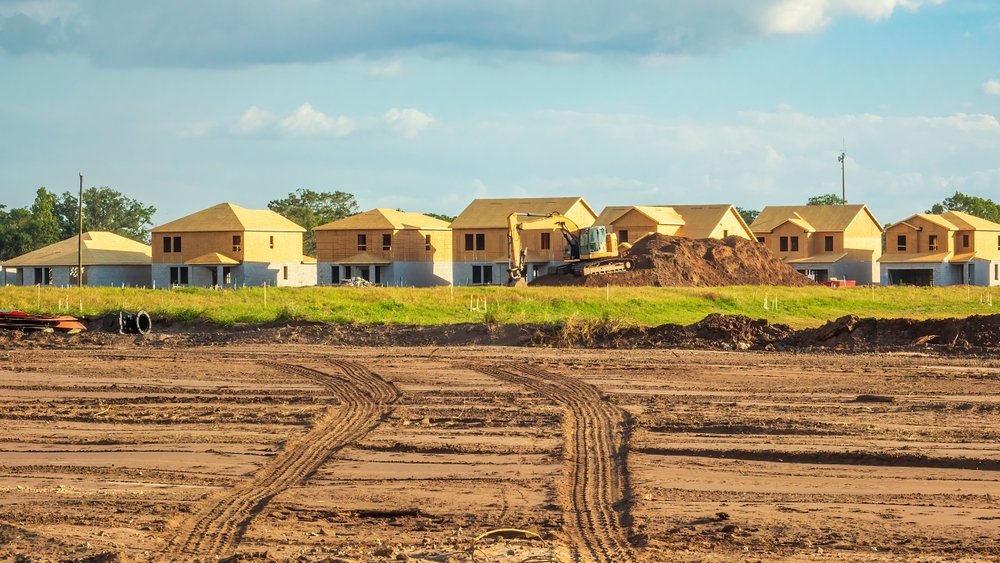
If you’re a growing retail chain business, there are many types of data essential to your site selection and market planning strategy—data that will help you predict customer demand, forecast sales, and evaluate the viability of potential locations.
- Demographic data like population size and growth, median household income, age distribution, and household composition (e.g., families, singles, or multigenerational) is critical for designing trade areas with the highest density of your target customer.
- Consumer behavior data like retail spending, brand preferences, and consumer buying habits helps you understand whether the people living and working in a search area are buying from a business or service like yours.
- Location (mobile phone) and foot traffic data enables your retail research team to learn about visit patterns of existing store locations and similar retailers as well as geographical areas that have excellent potential for your next store.
- And housing and real estate data is integral to your retail real estate analysts’ ability to get ahead of your competition and target unsaturated markets with growing populations.
Housing Growth = Market Opportunity
Smart, strategic retailers aim to enter markets where they will be well positioned for growth and profitability. And there’s no doubt that areas with growing housing development often signal surges in population—and increased anticipated demand for retail stores and services.
Now for the million-dollar question: what towns and cities are experiencing housing development?
We turned to our data partner, Hubexo, to find out. Hubexo’s ConstructionWire dataset tracks planned construction projects from proposal through completion for many different verticals. To come up with the top 20 metropolitan and micropolitan areas with the most planned residential development projects, we followed this methodology:
- We queried residential construction projects in the proposed, planning, starting in 1-12 months, starting in 12+ months, and under construction stages. Combined, we’ll refer to those projects as “planned residential construction.”
- We ran this data as of May 30, 2025.
- To understand growth relative to each area’s size, we indexed each market by comparing the total number of housing units in the above construction stages to the total number of units in the market today.
- Note: housing units include any physical units, such as houses or apartments. A housing unit can have more than one household (in the case of multifamily housing).
The Top 20 Areas in the U.S. with the Most Planned Residential Construction
Here’s the top 20, which includes both metropolitan and micropolitan areas, ranked by our index discussed above.
| Type | Name | Total Housing Units Proposed, Planned, or Under Construction | Index Rank |
| Metropolitan | St. George, UT | 40,870 | 1 |
| Micropolitan | Heber, UT | 14,464 | 2 |
| Metropolitan | Sherman-Denison, TX | 26,846 | 3 |
| Micropolitan | Sanford, NC | 11,726 | 4 |
| Metropolitan | Laredo, TX | 31,984 | 5 |
| Metropolitan | Austin-Round Rock-Georgetown, TX | 346,490 | 6 |
| Metropolitan | Myrtle Beach-Conway-N. Myrtle Beach, SC-NC | 84,231 | 7 |
| Metropolitan | Orlando-Kissimmee-Sanford, FL | 346,195 | 8 |
| Micropolitan | Jefferson, GA | 10,107 | 9 |
| Micropolitan | Bozeman, MT | 15,373 | 10 |
| Metropolitan | Kahului-Wailuku-Lahaina, HI | 15,292 | 11 |
| Metropolitan | Greeley, CO | 35,086 | 12 |
| Metropolitan | Deltona-Daytona Beach-Ormond Beach, FL | 83,750 | 13 |
| Metropolitan | Gainesville, GA | 20,973 | 14 |
| Metropolitan | Lakeland-Winter Haven, FL | 82,380 | 15 |
| Metropolitan | Raleigh-Cary, NC | 150,774 | 16 |
| Metropolitan | Nashville-Davidson-Murfreesboro-Franklin, TN | 208,501 | 17 |
| Metropolitan | Port St. Lucie, FL | 54,746 | 18 |
| Metropolitan | Boise City, ID | 74,938 | 19 |
| Micropolitan | Breckenridge, CO | 3,116 | 20 |
Top 20 Metropolitan Areas with the Most Planned Residential Construction
Separating out metropolitan areas only, the top 20 has many of the same names that appear on the combined metro/micro areas top 20. Logically, this makes sense. Larger cities are much more likely to have more residential development given their higher population density.
| Metropolitan Areas | Name | Total Housing Units Proposed, Planned, or Under Construction | Index Rank |
| St. George, UT | 40,870 | 1 | |
| Sherman-Denison, TX | 26,846 | 2 | |
| Laredo, TX | 31,984 | 3 | |
| Austin-Round Rock-Georgetown, TX | 346,490 | 4 | |
| Myrtle Beach-Conway-N. Myrtle Beach, SC-NC | 84,231 | 5 | |
| Orlando-Kissimmee-Sanford, FL | 346,195 | 6 | |
| Kahului-Wailuku-Lahaina, HI | 15,292 | 7 | |
| Greeley, CO | 35,086 | 8 | |
| Deltona-Daytona Beach-Ormond Beach, FL | 83,750 | 9 | |
| Gainesville, GA | 20,973 | 10 | |
| Lakeland-Winter Haven, FL | 82,380 | 11 | |
| Raleigh-Cary, NC | 150,774 | 12 | |
| Nashville-Davidson-Murfreesboro-Franklin, TN | 208,501 | 13 | |
| Port St. Lucie, FL | 54,746 | 14 | |
| Boise City, ID | 74,938 | 15 | |
| Wilmington, NC | 31,883 | 16 | |
| Durham-Chapel Hill, NC | 60,930 | 17 | |
| Jacksonville, FL | 149,684 | 18 | |
| North Port-Sarasota-Bradenton, FL | 88,706 | 19 | |
| Provo-Orem, UT | 43,489 | 20 |
Top 20 Micropolitan Areas with the Most Planned Residential Construction
Lastly, filtering for micropolitan areas only, the top 20 provides an interesting snapshot into some of the small towns in the USA that are seeing housing (and population) booms.
| Micropolitan Areas | Name | Total Housing Units Proposed, Planned, or Under Construction | Index Rank |
| Heber, UT | 14,464 | 1 | |
| Sanford, NC | 11,726 | 2 | |
| Jefferson, GA | 10,107 | 3 | |
| Bozeman, MT | 15,373 | 4 | |
| Breckenridge, CO | 3,116 | 5 | |
| Easton, MD | 3,302 | 6 | |
| Fredericksburg, TX | 2,422 | 7 | |
| Fernley, NV | 4,267 | 8 | |
| Kalispell, MT | 7,811 | 9 | |
| Edwards, CO | 3,144 | 10 | |
| Statesboro, GA | 4,691 | 11 | |
| Watertown, SD | 2,084 | 12 | |
| Ellensburg, WA | 2,644 | 13 | |
| LaGrange, GA-AL | 4,850 | 14 | |
| Montrose, CO | 2,256 | 15 | |
| Steamboat Springs, CO | 1,118 | 16 | |
| Los Alamos, NM | 832 | 17 | |
| Pinehurst-Southern Pines, NC | 4,557 | 18 | |
| St. Marys, GA | 2,154 | 19 | |
| Glenwood Springs, CO | 2,820 | 20 |
Other Interesting Data: Markets With Active Residential Construction
At the start of this blog, we mentioned that our query was residential construction projects in the proposed, planning, starting in 1-12 months, starting in 12+ months, and under construction stages (i.e., planned residential construction).
Although we’re not showing the figures for each of these individual project stages, Hubexo data is available at that level! That’s useful for retailers that want to dig deeper and find out what percentage of planned construction projects are already underway, starting within the year, or a long ways out (i.e., in the proposed or planning stages).
Here is a look at the Top 20 Areas with the Most Projects Under Construction:
| Type | Name | Index Rank |
| Metropolitan | Laredo, TX | 1 |
| Metropolitan | Austin-Round Rock-Georgetown, TX | 2 |
| Metropolitan | Gainesville, GA | 3 |
| Metropolitan | Orlando-Kissimmee-Sanford, FL | 4 |
| Metropolitan | Napa, CA | 5 |
| Metropolitan | Dallas-Fort Worth-Arlington, TX | 6 |
| Metropolitan | Deltona-Daytona Beach-Ormond Beach, FL | 7 |
| Metropolitan | Raleigh-Cary, NC | 8 |
| Micropolitan | Watertown, SD | 9 |
| Metropolitan | Nashville-Davidson-Murfreesboro-Franklin, TN | 10 |
| Metropolitan | Myrtle Beach-Conway-North Myrtle Beach, SC-NC | 11 |
| Micropolitan | Fredericksburg, TX | 12 |
| Micropolitan | Heber, UT | 13 |
| Metropolitan | North Port-Sarasota-Bradenton, FL | 14 |
| Micropolitan | Easton, MD | 15 |
| Metropolitan | Huntsville, AL | 16 |
| Micropolitan | Bozeman, MT | 17 |
| Metropolitan | San Antonio-New Braunfels, TX | 18 |
| Metropolitan | Lakeland-Winter Haven, FL | 19 |
| Metropolitan | Charlotte-Concord-Gastonia, NC-SC | 20 |
This ranking provides even more context to the residential housing development in different areas. Take the Austin, TX, metro area, for example. Austin came in as follows
- #6 area overall with the most planned residential construction
- #4 metro area with the most planned residential construction
- #2 area overall with the most projects already under construction
Better Market and Site Analysis, Better Location Decisions
Choosing a city or town with population growth and residential construction isn’t a guarantee of success. However, incorporating this data into your site selection and market analysis might reveal some surprises and trends that warrant further research. And without a doubt, considering this data in your analysis will enhance your location intelligence and help you reduce your risk.
Step up your game with SiteSeer! Our platform powered by up-to-date data can help you evaluate markets carefully and improve your decision making. Learn more by taking a demo today to see the tool in action and discover how to plan with precision and grow with confidence.

